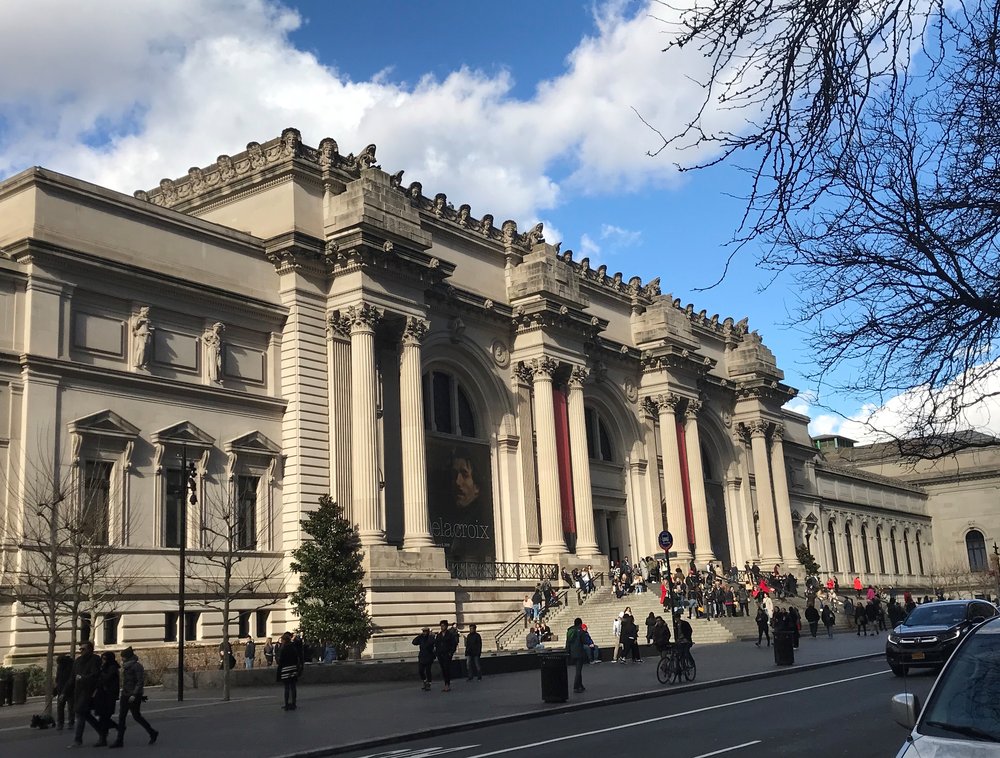Metropolitan Museum of Art set to return stolen sculptures to Cambodia
Dec. 15, 2023, 3:59 p.m.
The artworks were looted by a British collector, prosecutors say.

Thirteen stolen Khmer artworks that have been in the collection of the Metropolitan Museum of Art will be returned to Cambodia, federal prosecutors said Friday.
“All of the pieces being returned today were tied directly to illicit trafficking, and specifically to a man named Douglas Latchford — a collector and dealer [whom] my office charged in 2019 for running a vast antiquities trafficking network out of Southeast Asia,” U.S. Attorney for the Southern District of New York Damian Williams said in a statement.
Latchford, a British art collector, died in 2020, not long after he was charged with trafficking in stolen antiquities. After his death, his daughter donated all the Khmer artworks she had inherited from him to the Cambodian government.
In a statement, the museum said that in addition to the 13 artworks announced by Williams, it would also return an additional sculpture to Cambodia and two to Thailand, for a total of 16 artworks.
The museum also announced that some of the Hindu and Buddhist religious sculptures in question would remain on view temporarily until they were repatriated.
The artworks were made between the ninth and 14th centuries. Met officials “proactively” reached out to law enforcement and the Cambodian government after Latchford was indicted, according to the museum.
“The Met has been diligently working with Cambodia and the U.S. attorney’s office for years to resolve questions regarding these works of art, and new information that arose from this process made it clear that we should initiate the return of this group of sculptures,” said Max Hollein, the museum’s director and CEO, in a statement posted on the Met’s website.
The museum has beefed up its provenance research in the past year, amid intensifying criticism from the art world and the international press about potentially looted artworks. But some experts say the museum continues to drag its feet in identifying and returning those works.
“The Met has been very difficult,” attorney Brad Gordon said in a CBS News report on stolen antiquities from Cambodia in June.
The report cited the confessions of Toek Tik, a Cambodian man who said he had led a team of looters in 1997, along with the work of French archaeologist Eric Bourdonneau, who determined the foot of a sculpture attached to an otherwise-empty pedestal at a northern Cambodian heritage site matched the remainder of the sculpture on display at the Met.
Erin Thompson, a scholar at John Jay College of Criminal Justice who specializes in art crime, said the looting of the Cambodian sculptures from ancient sites “was an open secret” for years and “a truth obvious to all” after Latchford's 2019 indictment.
“The museum now says it has been ‘diligently working’ on Cambodia's repatriation claims, which were made in 2021,” said Thompson, who wrote about the controversy in the London Review of Books in July. “But taking years to determine that a sculpture whose broken feet still remain in Cambodia should go home does not seem terribly diligent to me.”
Williams warned cultural institutions and those who work in the art world to “be vigilant" about potentially plundered art.
“And if you work at one of these institutions or for a private collection and have concerns that certain pieces may be tied to illicit trafficking, do the right thing: come forward and work with us on a voluntary basis to facilitate the return to the rightful owners,” he said in his statement.
“That is a far better outcome for you and your institution than if our investigation leads to a knock on your door," he added. "In other words, come see us before we come see you.”
The Met says it has a plan to root out looted art from its collection 7 artworks, seized by Nazis, returned to descendants in NY